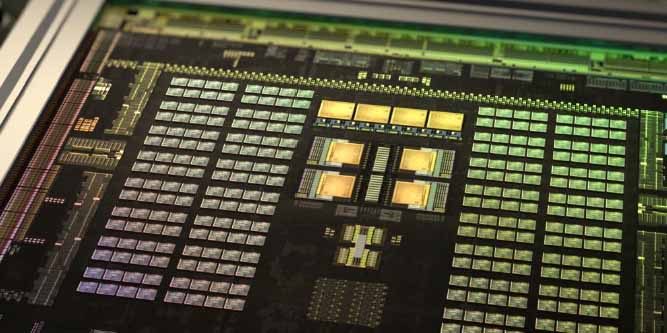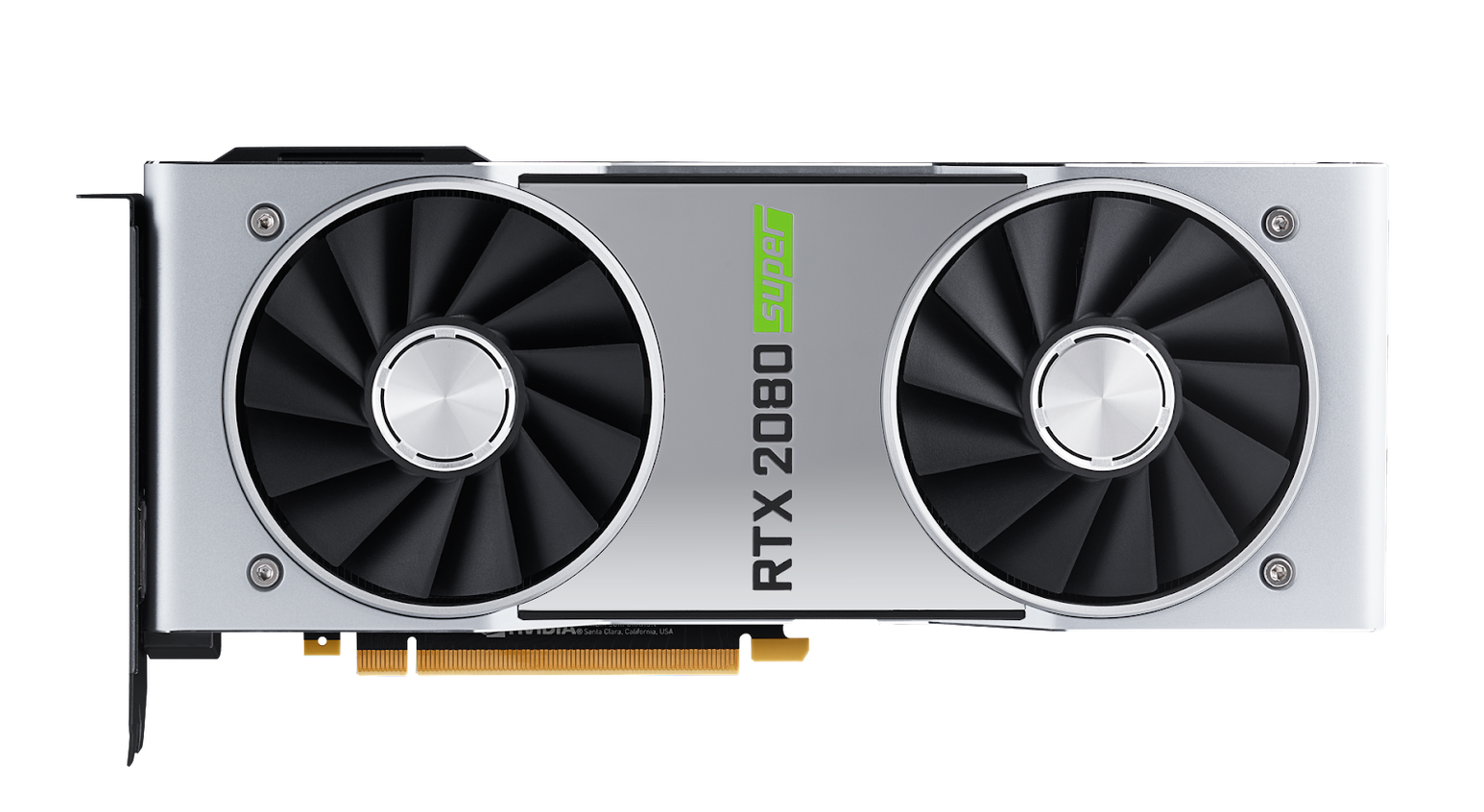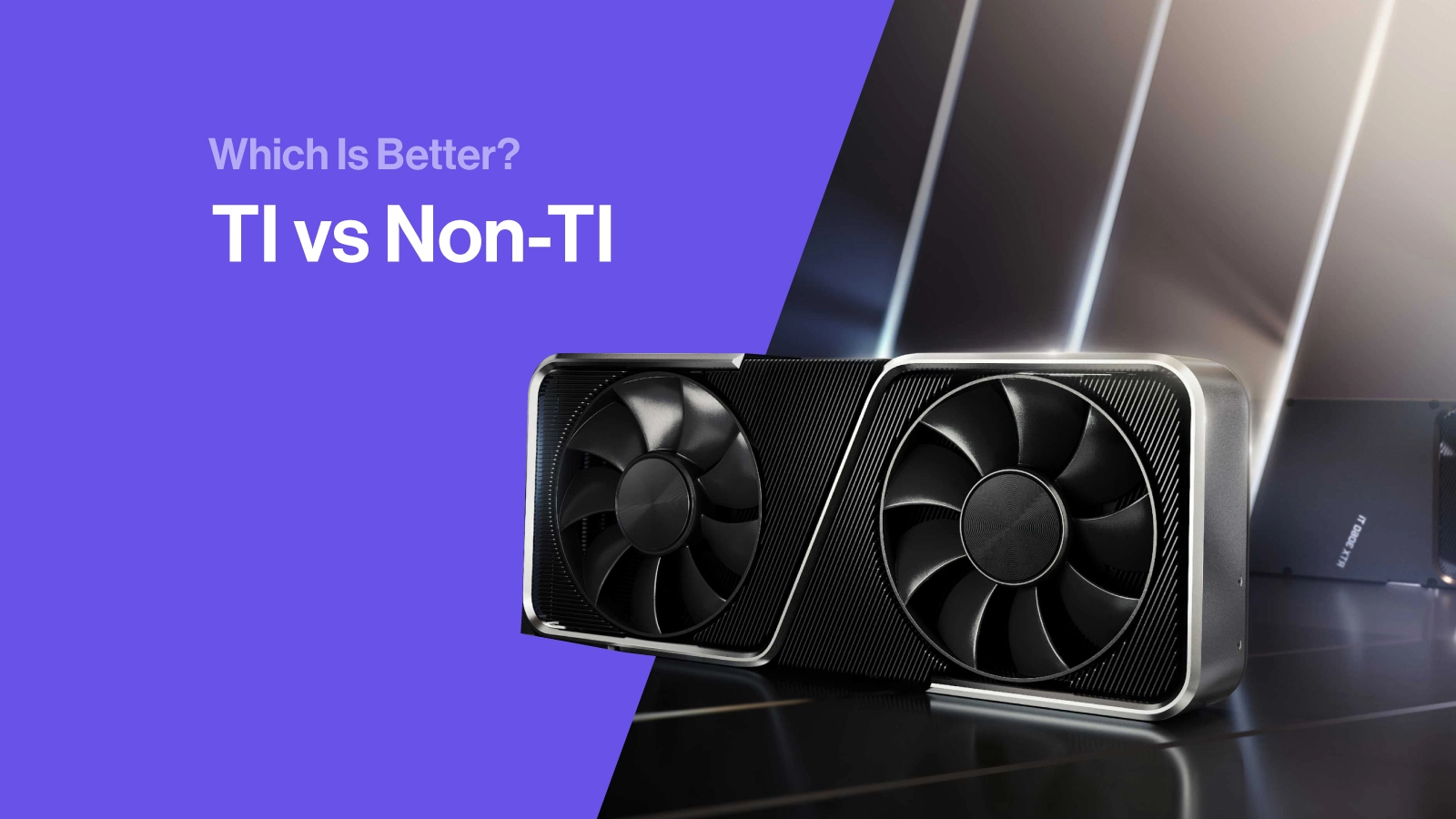NVIDIA has a lot of graphics cards and GPUs with naming conventions to distinguish them all. GeForce defines the gaming and consumer line of graphic cards we all know and love. GTX or RTX prefixes define the graphics technology where RTX introduced the use of Real-Time Ray Tracing. The card’s number designates its position in that generation of graphics cards. And finally, the added suffix afterward like SUPER or Ti, but what do these things mean?
What’s the difference? Let’s break it all down with a special focus on the popular Ti name.
What Does Ti Mean?
In the Past
Ti stands for Titanium, or at least it did, and NVIDIA has been using around 20-plus years. Some of the earliest examples of this naming convention include the GeForce2 Ti 200 and the GeForce3 Ti 200 and GeForce Ti 500, all released in the fall of 2001. At the time the GeForce 2 Ti 200 was seen as a cheaper alternative to the GeForce 3 Ti 200 and GeForce 3 Ti 500 cards (pictured).

These early Ti cards didn’t quite represent what they do today. Our modern understanding is that Ti cards are notable upgrades over the original base card. That wasn’t quite the case in those early days. The GeForce 3 Ti 200, for example, was actually a step down from the regular GeForce 3, while the Ti 500 version was the step up.
Present Day
These days the meaning of the Ti version is clear: it’s a step up from the base card. That means the GeForce RTX 2080 Ti is better than the RTX 2080 in terms of performance. The Ti versions are also seen as stepping stones between the base card and the next generation and usually serve as a refresh of the non-Ti model. This way, NVIDIA can utilize this existing stock of cards, inject additional CUDA cores, make minor adjustments and solve small grievances.
As you might expect, NVIDIA releases the Ti version of a new graphics card after the base card has been released, but that is not always the case. There are many Ti variants that were released before or at the same time as their non-Ti counterparts. Recently, NVIDIA released the RTX 3060 Ti before the base RTX 3060 card. These two cards were released in early 2021, which was right in the middle of a graphics card shortage triggered by supply chain issues and a higher demand for graphics cards among cryptocurrency miners. Those problems may have inspired NVIDIA to release the higher-performing, and likely more anticipated card, first.
In general, however, the Ti cards roll out after the original card is released. To get that step up in performance, Ti cards typically increase the number of CUDA cores and bump up the clock speeds.
Sometimes it can also mean an increase in RAM, but it usually gets a lot more complicated there. The increase in performance usually means greater power demands as well.
What is a CUDA Core

CUDA Core is a term that gets thrown around a lot when it comes to NVIDIA graphics cards but CUDA Cores are just the processing cores inside an NVIDIA graphics card and stand for Compute Unified Device Architecture.
Sidenote: CUDA is also the application programming interface or API that allows developers to use a graphics card’s computing resources via popular programming languages such as C and C++.
CUDA doesn’t have to be used just by gaming studios, either. It can be used for any purpose that requires parallel computing. Typically each processor is working on a smaller part of a larger whole such as rendering a Pixar animated movie, or a machine learning model processing a large training dataset.
GPU processors don’t have the same general purpose use case that a CPU does, but they are very useful for completing large sets of mathematical operations at the same time.
Ti Graphics Card vs Non-Ti (Base Model)
Now that we have a general understanding of what a Ti card is, let's look at a few examples from NVIDIA’s latest generation of cards.
GeForce RTX 3090 | GeForce RTX 3090 Ti | |
CUDA Core Count | 10,496 | 10,752 |
Boost Clock (GHz) | 1.7 | 1.86 |
Base Clock (GHz) | 1.4 | 1.67 |
VRAM | 24GB GDDR6X | 24GB GDDR6X |
Memory Interface Width | 384-bit | 384-bit |
Graphics Card Power (W) | 350 | 450 |
First up is the powerful GeForce RTX 3090 and 3090 Ti. Here we have a pretty straightforward example. The CUDA cores are bumped up from 10,496 in the base 3090 to 10,752 in the 3090 Ti. The boost clock increases from 1.7GHz to 1.86GHz, and the base clock is from 1.4GHz to 1.67GHz.
Each graphics card has the same RAM, memory interface width, specific types of cores (such as Ray Tracing and Tensor), and architecture. But the 3090 Ti needs noticeably more power at 450 watts versus 350W in the base 3090.
The 3090 Ti is a perfect example of what most people imagine a Ti card should be. The same generation and architecture as the base model with more processing cores and a better base clock. The 3090 Ti performs 13% over the 3090 Ti.

Now let’s look at the 3060 and 3060 Ti where things get a bit more complicated.
GeForce RTX 3060 | GeForce RTX 3060 Ti | |
CUDA Cores | 3,584 | 4,864 |
Boost Clock (GHz) | 1.78 | 1.67 |
Base Clock (GHz) | 1.32 | 1.41 |
VRAM | 12GB | 8GB |
Memory Interface Width | 192-bit | 256-bit |
Graphic Card Power (W) | 170 | 200 |
As you can see in the table above we start with an increase in CUDA cores up from 3,584 to 4,864. The boost clock is actually lower here for the Ti, while the base clock is higher.
Then we get to the RAM where the 3060 has 12GB of GDDR6 compared to the 8GB on the 3060 Ti. We also see the usual bump in power consumption. That RAM count is a little surprising. The 3060 Ti does have a wider memory interface but 12GB is still a lot more RAM than 8GB! In performance comparisons, however, the 3060 Ti still outperforms the 3060, as we’d expect at about 35% better according to UserBenchmark.com
As for why the base model has more RAM, it could’ve been planned that way or NVIDIA may have been reacting to AMD. Around the same time as the RTX 3060 rollout, AMD was releasing the Radeon RX 6700 with 12GB of VRAM. We’ll never know the reason for sure, but the important point is that even with the 3060’s extra RAM, the 3060 Ti outperforms its cousin.
NVIDIA Ti vs SUPER

NVIDIA has also released some graphics card variants called SUPER, such as the 1660 SUPER and the 2080 SUPER, among others.
The SUPER versions are typically minor upgrades to the original base cards and generally don’t compete in terms of performance with the Ti versions. Think of it like a baby Ti. SUPER cards is usually to refresh a line-up that’s been in the market for a while by adding a few extra Cuda cores and other features to improve performance just like Ti but not at the same level. Just remember that SUPER cards generally don’t beat out their Ti counterparts, so if you’re in the market for 2080, spring for the Ti over the super.
Is Ti always Better?
If you’re looking for the best performance you can get out of a consumer-grade NVIDIA graphics card for machine learning, video rendering, or gaming then going with a Ti video card is your best option - especially if you’re looking at something like the GeForce RTX 30 Series of cards. Currently, the 3060 Ti has the best performance-to-price ratio for 1440p gaming.
Here at SabrePC, we’ve got an excellent line-up of graphics cards from NVIDIA and AMD to suit your needs or workstations with options to load your machine with up to five graphics cards! Get in touch today for help building your next high-performance system.
PS: Pronunciation of Ti is still unknown; even the VP of GeForce says both "Tee, Eye" and "Tie."
Looking for your next Graphics Card or PC?
Contact SabrePC today.


